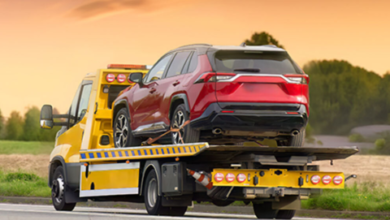
When it comes to car shipping, whether you’re moving across the country or purchasing a vehicle from a distant location, ensuring a smooth and hassle-free experience is crucial. In this guide, we’ll provide you with expert advice and practical tips to make your vehicle’s journey as seamless as possible. From choosing the right service to preparing your car for transport, we’ve got you covered.
1. Research and Choose a Reliable Car Shipping Company
The first step in ensuring a hassle-free car shipping experience is to research and choose a reliable car shipping company. Look for companies with strong reputations, positive customer reviews, and appropriate licensing and insurance. Websites like the Better Business Bureau (BBB) and the Federal Motor Carrier Safety Administration (FMCSA) can help you verify the legitimacy and reliability of potential shippers.
Key Considerations:
- Experience: Opt for companies with several years of experience in the industry.
- Customer Feedback: Read reviews and testimonials from previous customers.
- Insurance Coverage: Ensure the company provides adequate insurance for your vehicle.
2. Understand the Different Car Shipping Options
There are various car shipping options available, and understanding them will help you make an informed decision. The two primary methods are open transport and enclosed transport, but other options include terminal-to-terminal transport and expedited shipping.
Open Transport
- Description: Vehicles are transported on an open trailer, exposed to the elements.
- Pros: More affordable, widely available.
- Cons: Less protection from weather and road debris.
Enclosed Transport
- Description: Vehicles are transported in an enclosed trailer, providing maximum protection.
- Pros: Ideal for high-value, classic, or luxury cars.
- Cons: More expensive, limited availability.
Terminal-to-Terminal Transport
- Description: Vehicles are dropped off and picked up at designated terminals.
- Pros: Often more cost-effective than door-to-door services.
- Cons: Less convenient, requires you to travel to and from the terminal.
Door-to-Door Auto Transport
- Description: Vehicles are picked up from and delivered to specified locations.
- Pros: Maximum convenience, reduces the need for additional travel.
- Cons: Slightly more expensive than terminal-to-terminal transport.
Expedited Shipping
- Description: A faster shipping option for those who need their vehicle delivered quickly.
- Pros: Significantly reduced transit times.
- Cons: Higher cost compared to standard shipping options.
Key Considerations for Choosing a Transport Method:
- Budget: Determine how much you are willing to spend on car shipping.
- Vehicle Type: Consider the value and condition of your vehicle.
- Convenience: Decide how much effort you are willing to put into the drop-off and pick-up process.
- Time Constraints: Assess how quickly you need your vehicle delivered.
By understanding the different car shipping options, you can choose the method that best suits your needs and ensures the safety and timely delivery of your vehicle.
3. Get Multiple Quotes and Compare Prices
To get the best value for your money, it’s essential to get multiple quotes and compare prices from different car shipping companies. Keep in mind that the cheapest option isn’t always the best. Consider the reputation, services offered, and insurance coverage of each company when making your decision.
Tips for Getting Accurate Quotes:
- Provide Detailed Information: Include the make, model, and condition of your vehicle, as well as the pickup and delivery locations.
- Ask About Additional Fees: Inquire about any potential extra charges, such as fuel surcharges or expedited shipping.
4. Prepare Your Vehicle for Shipping
Properly preparing your vehicle for shipping is crucial to ensure its safety during transit. Here are some steps to follow:
Clean Your Car:
- Exterior: Wash your car thoroughly to inspect for any existing damage.
- Interior: Remove all personal belongings and any loose items that could be damaged or cause damage during transport.
Check for Leaks and Mechanical Issues:
- Fluid Levels: Ensure all fluids are topped off and there are no leaks.
- Battery and Tires: Make sure your battery is fully charged and tires are properly inflated.
Document Existing Damage:
- Photos: Take clear photos of your vehicle from multiple angles, documenting any existing damage.
- Report: Provide a copy of these photos to the shipping company and keep one for your records.
5. Choose Door-to-Door Auto Transport for Convenience
For a more convenient and stress-free experience, choose door-to-door auto transport. This service allows your vehicle to be picked up and delivered directly to your specified locations, eliminating the need for you to drop off or pick up your car at a terminal.
Benefits of Door-to-Door Auto Transport:
- Time-Saving: No need to travel to a terminal.
- Reduced Risk: Less handling of your vehicle reduces the risk of damage.
- Convenience: Ideal for busy schedules and remote locations.
6. Schedule Your Car Shipping in Advance
To ensure availability and avoid last-minute stress, schedule your car shipping in advance. Peak seasons, such as summer and holidays, can lead to higher demand and longer wait times. Booking early helps secure your preferred dates and may even result in lower costs.
Tips for Scheduling:
- Flexibility: If possible, provide a range of pickup and delivery dates.
- Lead Time: Aim to book at least two to four weeks in advance.
7. Understand the Car Shipping Process
Familiarizing yourself with the car shipping process can help set your expectations and alleviate any concerns.
Typical Steps Involved:
- Booking: Once you’ve chosen a company, you’ll schedule the pickup and delivery dates.
- Pickup: The driver will inspect your vehicle and load it onto the transport trailer.
- Transit: Your vehicle will be transported to the destination.
- Delivery: Upon arrival, the driver will inspect your vehicle again and deliver it to your specified location.
Communication:
- Tracking: Some companies offer GPS tracking so you can monitor your vehicle’s progress.
- Updates: Stay in contact with the shipping company for any updates or changes.
8. Ensure Proper Insurance Coverage
Verify that your car shipping company provides adequate insurance coverage for your vehicle during transit. This is crucial for protecting yourself against potential damages.
Steps to Verify Insurance:
- Request Proof: Ask for proof of the company’s insurance policy.
- Understand Coverage: Review the policy details to understand what is cover and any limitations.
- Additional Coverage: Consider purchasing additional coverage if needed.
9. Be Prepared for Delivery
When your vehicle arrives at its destination, be prepare for the delivery process.
Inspection:
- Thorough Check: Inspect your vehicle carefully for any new damage.
- Documentation: Use your pre-shipping photos to compare and document any discrepancies.
- Report Issues: Report any damage to the shipping company immediately and file a claim if necessary.
10. Review and Follow Up
After your vehicle has been successfully deliver, take the time to review your car shipping experience.
Provide Feedback:
- Reviews: Leave a review for the car shipping company to help future customers.
- Feedback: Provide constructive feedback to the company to help them improve their services.
Follow Up:
- Final Check: Ensure all paperwork is complete and any issues are resolve.
- Recommendations: If you had a positive experience, recommend the company to others.
By following these top 10 tips, you can ensure a smooth and hassle-free cars shipping experience. Whether you’re looking for vehicle transport in Chicago, door-to-door auto transport, or stress-free vehicle relocation, this guide provides the expert advice you need to make informed decisions and protect your vehicle during its journey.
Read more helpful blogs like this.

